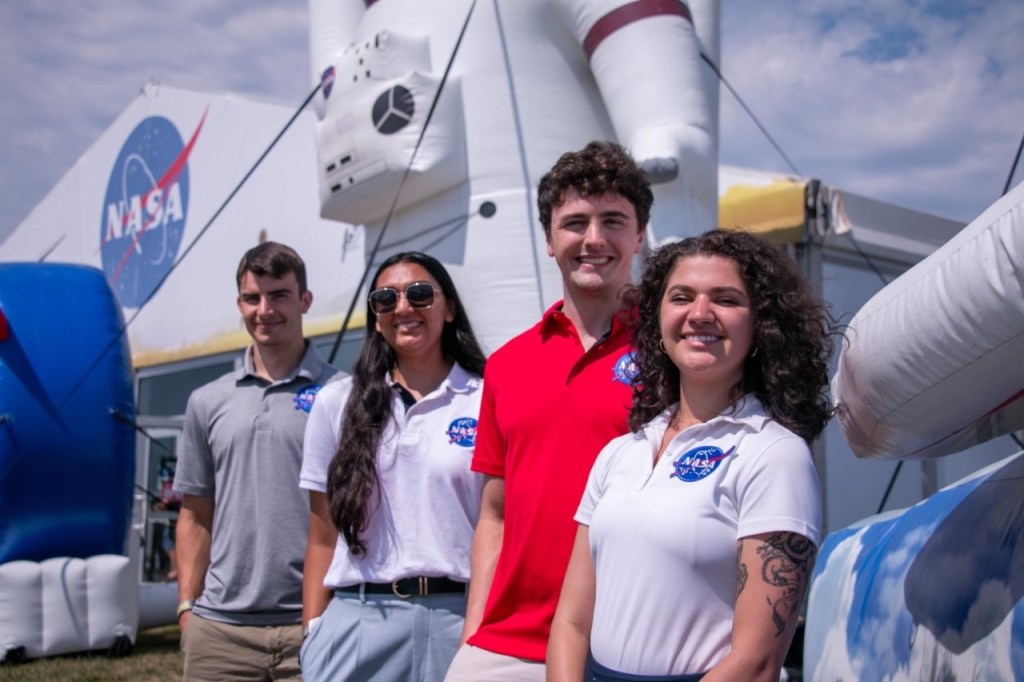After its return from its second flight into space, in January 1982 NASA prepared space shuttle Columbia for its third mission, scheduled for launch on March 22, 1982. The STS-3 crew of NASA astronauts Jack R. Lousma and C. Gordon Fullerton, and their backups Thomas K. “TK” Mattingly and Henry W. “Hank” Hartsfield, trained for the flight in the shuttle mission simulator at NASA’s Johnson Space Center (JSC) in Houston. At NASA’s Kennedy Space Center (KSC) in Florida, ground crews mated the shuttle’s external tank with its solid rocket boosters and installed the science payload into Columbia’s cargo bay. Meanwhile, construction work on space shuttle Challenger was nearly complete as assembly on Discovery began. The first European-built Spacelab module arrived at KSC to begin preparations for its first flight in 1983.
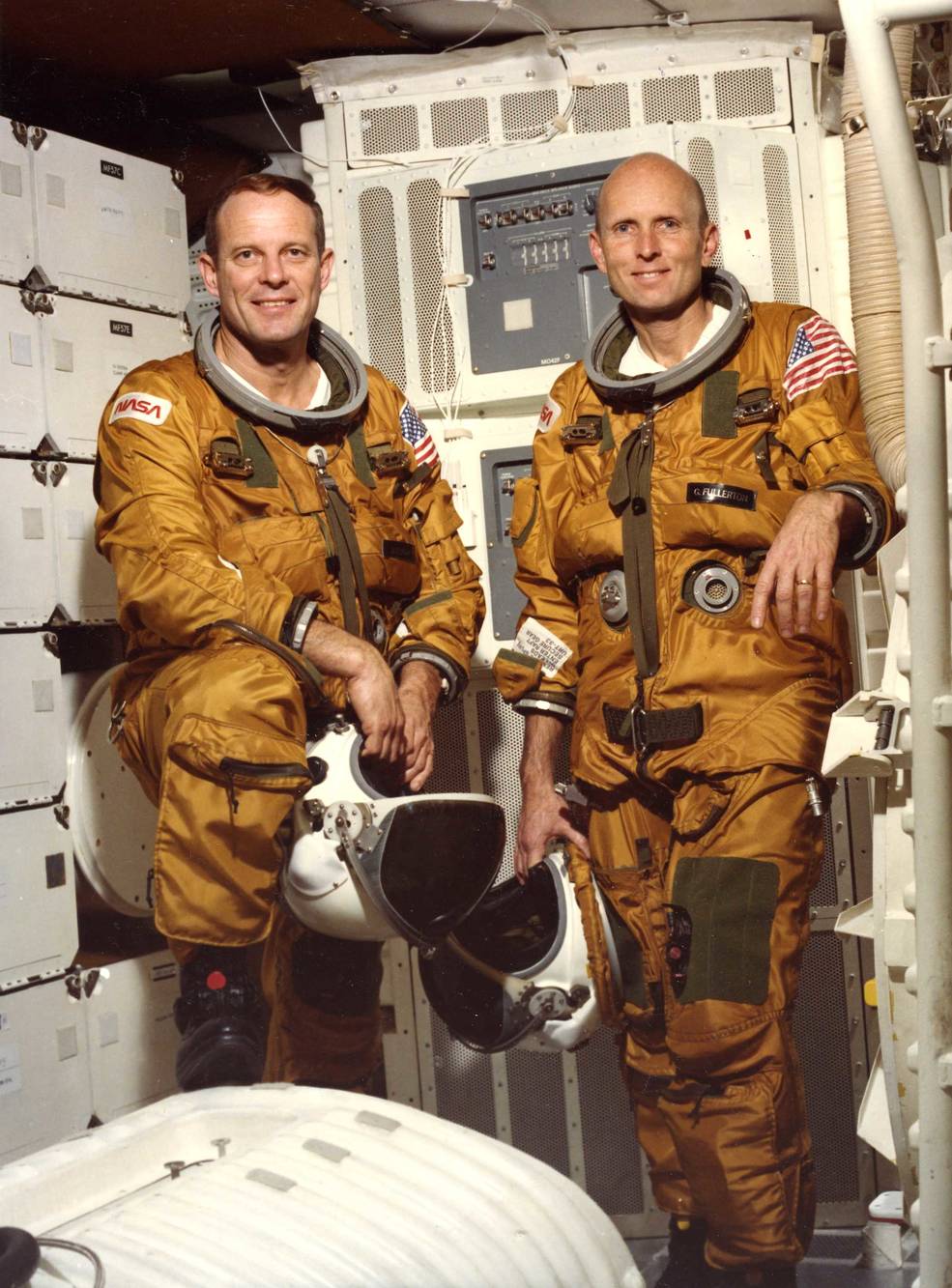
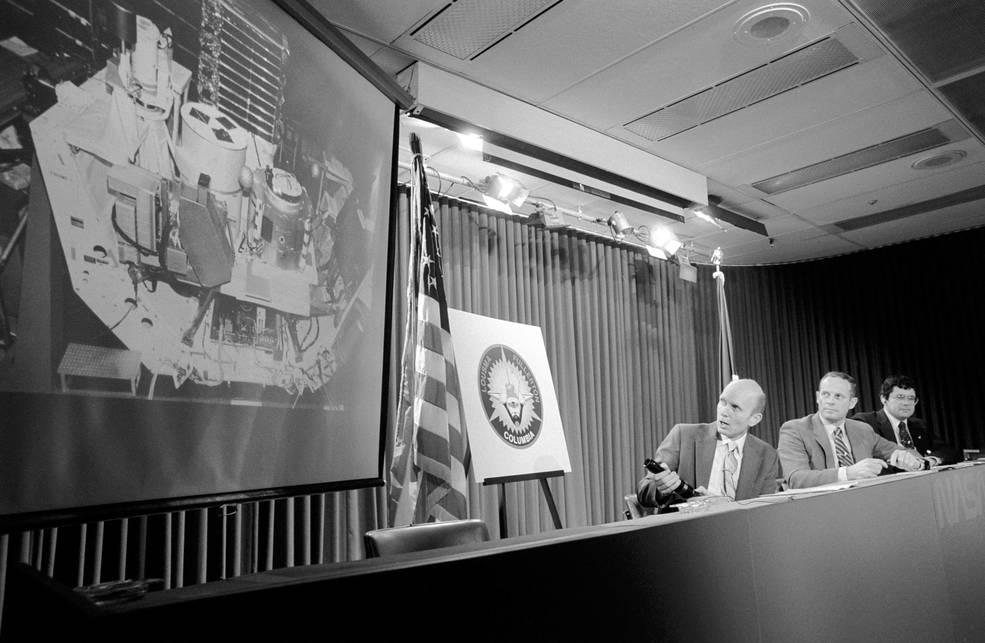
Left: STS-3 astronauts Jack R. Lousma, left, and C. Gordon Fullerton pose in a
shuttle trainer. Right: Fullerton, left, and Lousma explaining the STS-3
payload during a preflight press conference.
On Jan. 21, 1982, Lousma and Fullerton held a press conference at JSC to describe their seven-day, 116-orbit mission to the media. Their mission would not only be significantly longer than the first two flights but also more complex. The primary goal of the flight was to maneuver the orbiter into various attitudes to gather data over a range of thermal conditions. Their payload, called OSS-1 after its sponsor NASA’s Office of Space Science, played a significant role in the mission’s planning as it involved the first use of the Canadian-built Remote Manipulator System (RMS) robotic arm to lift an object out of the payload bay. They planned to operate the RMS on four other occasions during the flight. Lousma and Fullerton trained for various aspects of their flight in the shuttle mission simulator and were preparing for a 57-hour long simulation in early February that included JSC’s Mission Control Center (MCC). Teams of controllers led by Flight Directors Neil B. Hutchinson, Tommy W. Holloway, Harold M. Draughon, and John T. Cox participated in the simulation as they would during the actual mission.
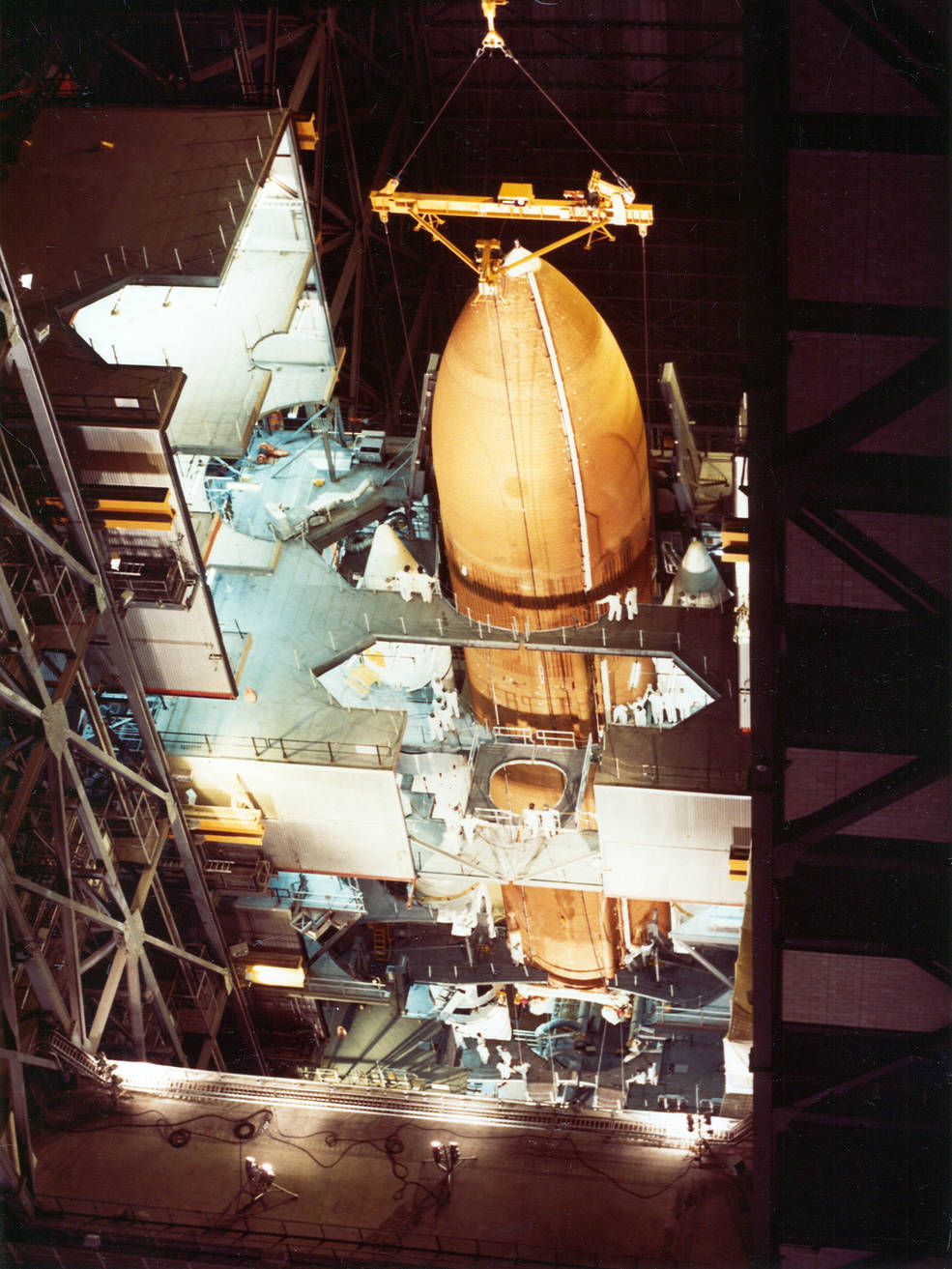
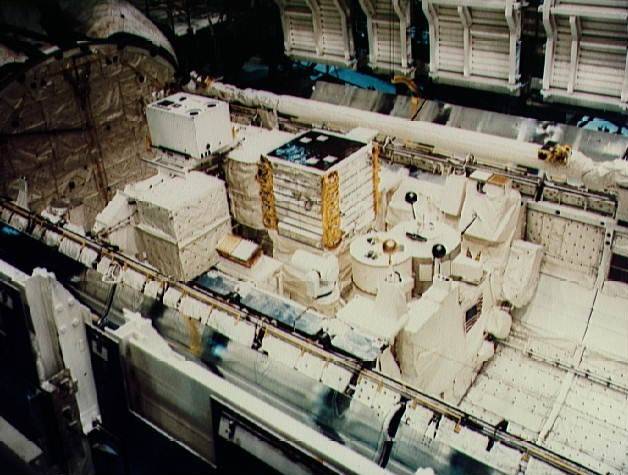
Left: In the Vehicle Assembly Building at NASA’s Kennedy Space Center (KSC) in
Florida, ground crews position the external tank for STS-3 for mating with the
two solid rocket boosters. Right: In KSC’s Orbiter Processing Facility, the
OSS-1 payload is installed in Columbia’s cargo bay, with the Canadian-built
Remote Manipulator System arm positioned on the payload bay sill.
In KSC’s cavernous Vehicle Assembly Building (VAB), ground crews mated the external tank (ET) for STS-3, the first to not be painted white, with its solid rocket boosters (SRBs) on Jan. 5, where they awaited Columbia’s arrival in early February. In the nearby Orbiter Processing Facility (OPF), workers installed the OSS-1 payload into Columbia’s cargo bay, mounted on a Spacelab pallet. The OSS-1 consisted of nine experiments in space plasma physics, solar physics, astronomy, life sciences, and space technology. Among the objectives was to obtain data on the near-Earth environment and the contamination the shuttle itself caused. On Jan. 26-27, OPF engineers completed the cargo verification interface test between JSC’s MCC and the payloads aboard Columbia. At the end of the month, they closed the payload bay doors in preparation for rolling Columbia to the VAB the first week of February for stacking with the ET and SRBs.
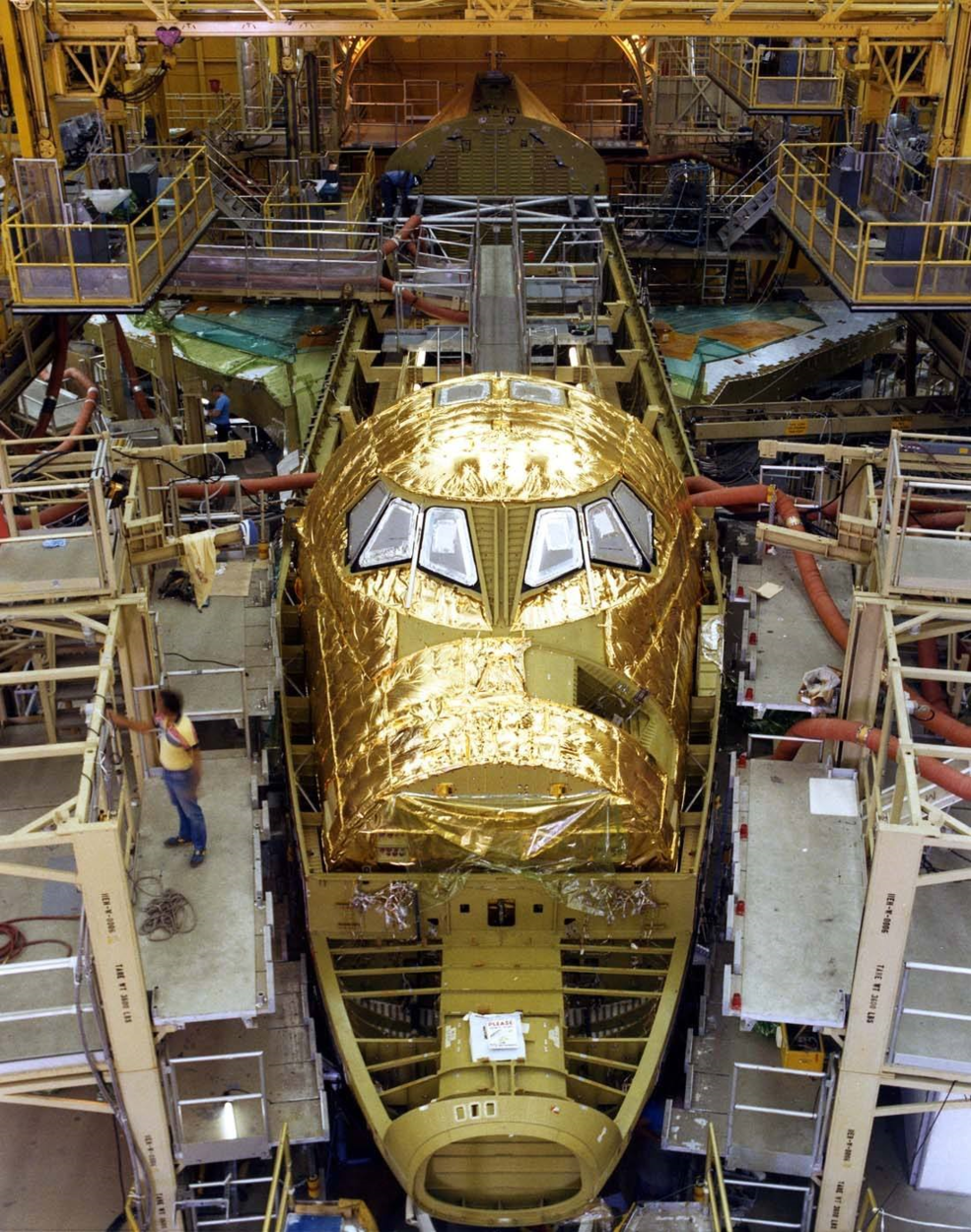
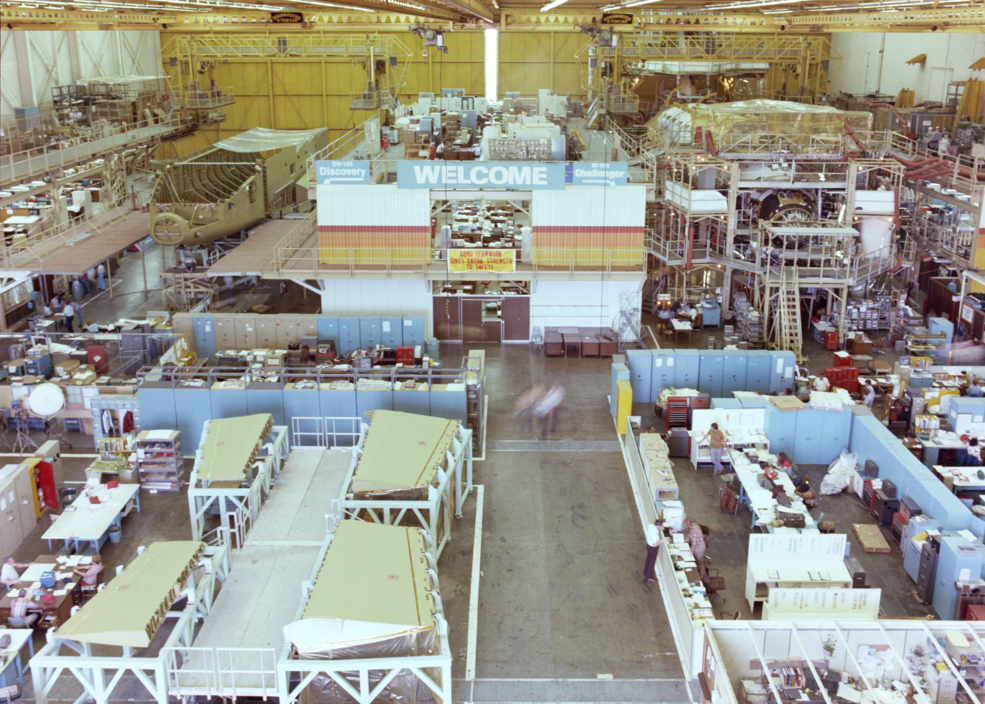
Left: Space shuttle Challenger under construction at Rockwell International’s
Palmdale, California, facility. Right: The midbody and lower forward fuselage
of space shuttle Discovery, left, have joined the nearly-completed
Challenger in the Palmdale facility.
While ground crews at KSC prepared Columbia for its third orbital flight, workers at Rockwell International’s Palmdale, California, facility were building the next two space shuttle orbiters. Assembly of Challenger’s major components was finished on Oct. 23, 1981, while parts still to be added as of January 1982 included the elevons, the forward reaction control system module, and the body flap. Nearly 20,000 thermal protection system tiles were already installed with less than 7,000 more to be added. Rollout of Challenger was scheduled for June 1982. With improvements in manufacturing and other factors, Challenger weighed 2,889 pounds less than its sister ship Columbia, a mass savings that translated into greater payload carrying capacity. In the same facility, assembly of the next orbiter, Discovery, began with the arrival of the first major structural piece, the vehicle’s midbody fuselage.
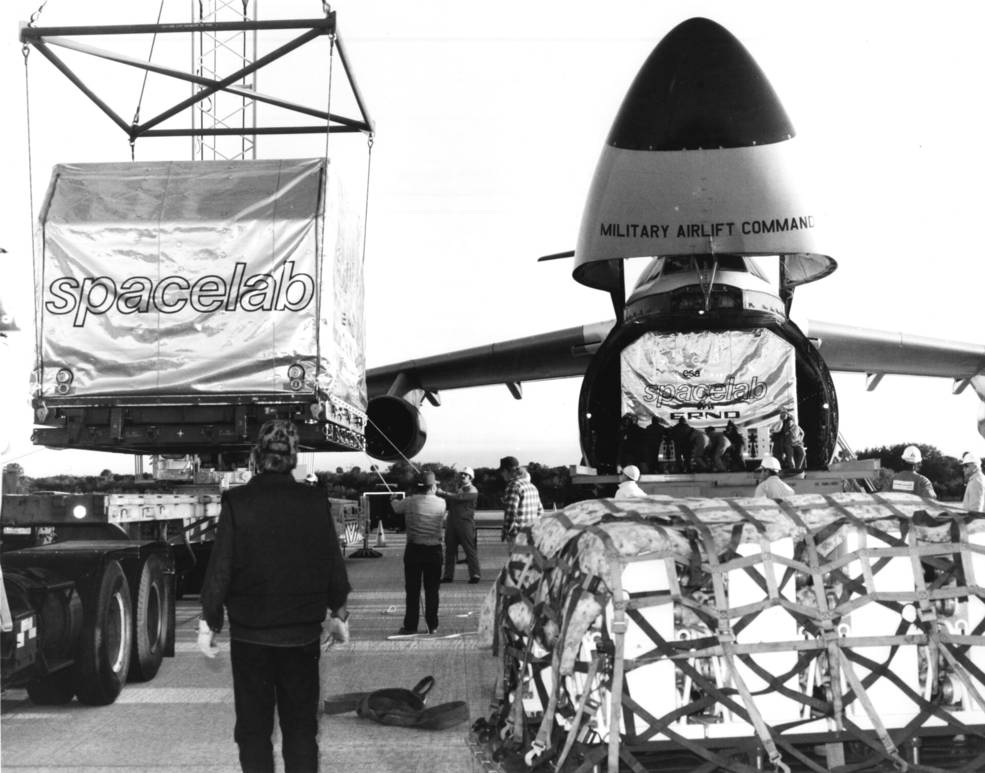
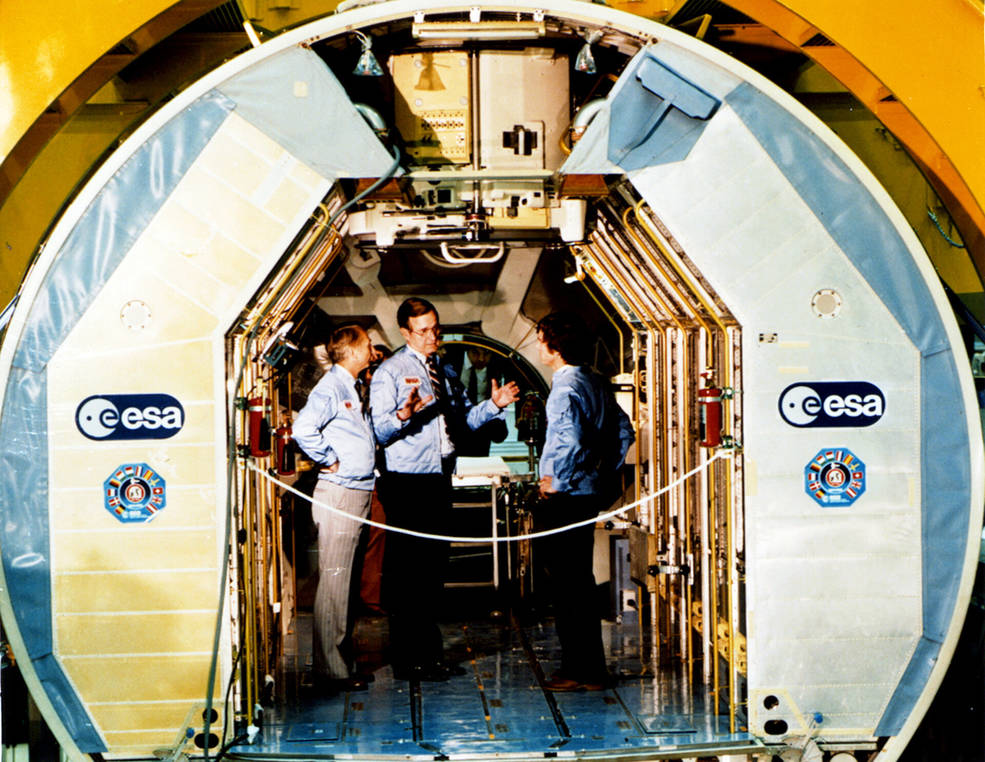
Left: The first flight of the European-built Spacelab module arrives at NASA’s
Kennedy Space Center (KSC) in Florida. Image credit: Courtesy of the
European Space Agency. Right: NASA astronaut Owen K. Garriott, left,
Vice President George H.W. Bush, and European Space Agency payload
specialist Ulf Merbold inside the Spacelab engineering model
during acceptance ceremonies of the flight version at KSC.
The first flight version of the Spacelab science module arrived at KSC on Dec. 11, 1981, from its manufacturer in Bremen, West Germany. Spacelab, the European Space Agency’s (ESA) largest contribution to the space shuttle program, is a pressurized module placed in the shuttle’s payload for the conduct of scientific experiments in a shirt-sleeve laboratory-type environment. NASA formally accepted the module in a ceremony at KSC on Feb. 5, 1982, attended by Vice President George H.W. Bush and NASA Administrator James M. Beggs. During the first flight of the Spacelab module on the seven-day STS-9 mission, then planned for September 1983, NASA and ESA selected 70 experiments in five scientific disciplines.
To be continued…
World events in January 1982:
January 1 – Peru’s Javier Pérez de Cuéllar becomes the fifth Secretary General of the United Nations.
January 4 – Bryant Gumbel becomes co-host of “The Today Show” on NBC.
January 9 – Magnitude 5.9 earthquake in New England and Canada, the first since 1855.
January 13 – Hank Aaron and Jackie Robinson elected to the baseball Hall of Fame.
January 24 – In Super Bowl XVI, played in the Pontiac Silverdome in Detroit, the San Francisco 49ers beat the Cincinnati Bengals 26-21.





















